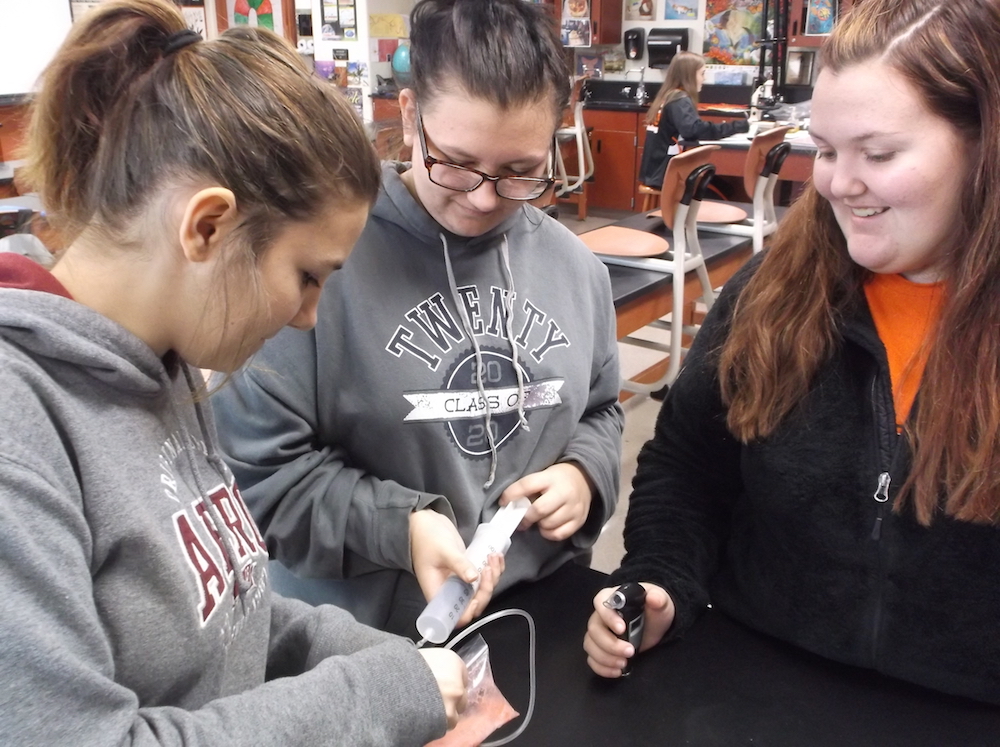Recently the 10th grade biology students at Fort Jennings High School worked on the Corn Fermentation in a Bag lab experiment. Teacher Jeff Jostpille, a Feed the World alumni educator, first reviewed cellular respiration and organic molecules. Next, he talked about commercial ethanol production, reminding students about the two local ethanol facilities. He explains the fermentation activity:
“Students could choose from a variety of feedstocks, including sugar, honey, blue agave, stevia, coconut sugar, cornstarch, hammered corn, corn syrup, and glucose tablets. Also available were yeast, amylase, and glucoamylase enzymes. I allowed the students complete control over the combination they chose for maximum ethanol production.
“All materials and 50 ml of warm water were added to zipper storage bags and mixed. Students then researched each feedstock to determine if they were a mono-, di-, or polysaccharide. Then they figured out what combination of enzymes were needed for maximum cellular respiration. This was done while measuring the height of their bags every five minutes.

“Due to time constraints, the bags were left in the science lab until the following day, which allowed some of the bags to split and leak. So each student started over with a brand new combination, using the correct information they’d learned the day before! They got a full period of measurements recorded and were asked to carry their “babies” with them to insulate them until later in the day.
“When the students returned later, they checked the alcohol production with a pocket breathalyzer. Content ranged from .03% to .1% alcohol. Some students had to come back into the classroom several times to relieve the pressure of the carbon dioxide in the bags!
“The Feed the World workshop provided me with valuable resources. Having helped to demonstrate the lab at the BGSU STEM symposium in November, I knew how to adapt the lesson to my curriculum. This lab exercise helped review or teach about aerobic and anaerobic respiration, fermentation, enzymes, organic compounds, commercial ethanol production, and lab procedures. The students enjoyed using the breathalyzer and creating their own set up for the bags.”